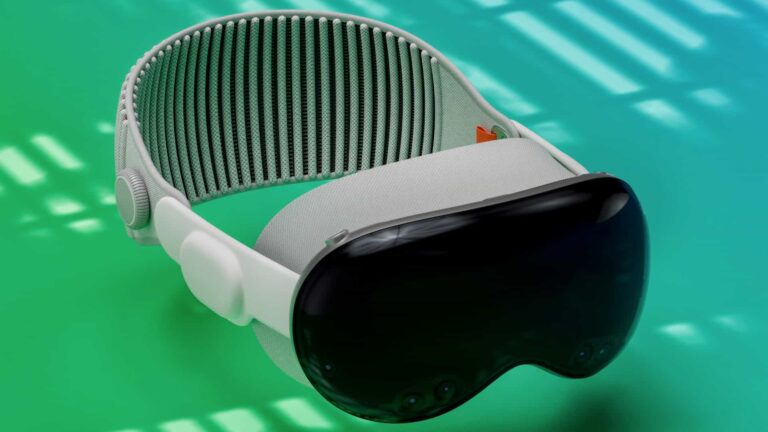
Apple Vision Pro is not only a tool for developers to deliver unparalleled spatial experiences, but it is also changing the way developers create these immersive journeys. Developers can now immerse themselves in AR and use the infinite screens of visionOS to not only bring their ideas to life but also to iterate and multitask, setting a new standard for the future of development.
Coupled with 8th Wall’s Cloud Editor, this integration enables creators to construct compelling real-world WebAR experiences from within the very fabric of augmented reality itself. It’s a transformative approach, blending creation and experience into a seamless workflow that opens up new realms of productivity and innovation for developers.
To that end, here are four pros and four cons that developers can expect when diving into development with the Vision Pro headset.
Pros of AVP Development
1. Integrated Development Workflow
The fusion of the 8th Wall Cloud Editor with direct development inside the Vision Pro headset marks a significant leap in AR/VR creation. Developers can now use a wireless keyboard or their computers to edit code and see the impacts of their changes in real-time within the VR environment. This streamlined process not only enhances efficiency but also bridges the gap between ideation and execution.
2. Seamless Testing Experience
The often tedious process of switching between coding and testing phases—marked by the constant need to remove and wear the headset—is virtually eliminated. This seamless transition is not just convenient, it rapidly increases productivity by allowing for rapid iterations and a smoother development journey.
3. Advanced Hand Tracking
Vision Pro’s precise hand-tracking capabilities stand out, offering a level of interaction that feels natural and intuitive. This feature is vital for creating immersive experiences that users find engaging and lifelike, setting a new standard for interactive VR applications.
4. Multitasking Capabilities
The Vision Pro environment supports multitasking in a way that’s particularly beneficial for developers. Having the ability to keep multiple AR tabs open—for instance, 8th Wall tutorials, documentation, and the 8th Wall Simulator—next to one another aids in a more comprehensive and efficient workflow. This access to resources and tools without having to leave the development environment is invaluable.
Cons of AVP Development
1. Eye Strain
While the immersive development environment is a significant advantage, it does come with a downside. Prolonged exposure to the headset’s displays may lead to eye strain, requiring developers to take regular breaks to maintain their well-being—a factor that could interrupt the flow of work.
2. Lack of Pass-Through
One of Vision Pro’s notable limitations is the absence of pass-through for web based immersive experiences. This feature, crucial for blending digital creations with the physical world, is missing, and it limits the scope of AR experiences that developers can create, potentially impacting user immersion and interaction.
3. Comfort Issues
Despite its advanced features, the physical design of the Vision Pro headset might not be perfect for everyone. The weight of the headset can lead to discomfort or strain over extended periods, which could affect developers’ productivity and overall experience.
4. Additional Considerations
Developers might face other challenges not explicitly mentioned, such as managing battery life, navigating limited software compatibility, or overcoming the learning curve associated with adapting to new development environments. These factors collectively contribute to the complexity of developing on the Vision Pro platform.
Strong Foundation
Overall, developing WebAR and other AR/VR applications on the Apple Vision Pro offers a mix of both promising opportunities and enhancement for productivity with a strong foundation for innovation and development. While there are some core drawbacks, we’re excited to see how Vision Pro sets the stage for the future of real-world immersive AR experiences and development.
 Ian Curtis is a designer and XR Support Engineer at Niantic 8th Wall. See his portfolio here. A version of this article first appeared on the 8th Wall blog, reposted here with permission from 8th Wall.
Ian Curtis is a designer and XR Support Engineer at Niantic 8th Wall. See his portfolio here. A version of this article first appeared on the 8th Wall blog, reposted here with permission from 8th Wall.

